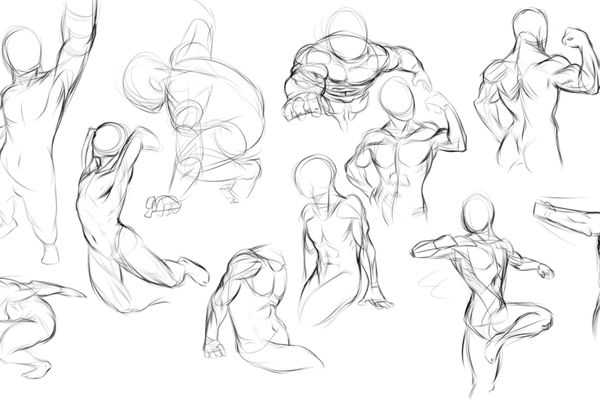Draw human anatomy
Draw a simplified human anatomy poster showing skeleton, major muscles, and internal organs using pencils and colored markers while learning body part names accurately.


Step-by-step guide to draw a simplified human anatomy poster
🧠🦴 THE HUMAN BODY for Kids 💖🧍🏻♂️ Compilation of +1 Hours
Step 1
Gather all your materials and place them on a clean flat surface.
Step 2
Look at your reference picture and pick the body pose you want to draw.
Step 3
Lightly draw a simple standing outline of a human figure with your pencil.
Step 4
Lightly sketch the main skeleton shapes inside the outline like the skull spine ribcage pelvis arms and leg bones.
Step 5
Erase any stray pencil marks that make the skeleton hard to see.
Step 6
Using a colored marker draw simplified major muscles over the skeleton such as chest shoulders biceps abs thighs and calves.
Step 7
Inside the torso draw the major internal organs with different colors like the heart lungs stomach liver and intestines.
Step 8
Trace the final lines of the whole poster with the black fineliner to make shapes clear and bold.
Step 9
Neatly label each bone muscle and organ with its correct name and draw an arrow from each label to the part.
Step 10
Write a big title at the top of your poster such as "Human Anatomy" in bright marker.
Step 11
Add color and small decorative details to make your poster look finished and fun.
Step 12
Take a photo of your finished anatomy poster and share your creation on DIY.org
Final steps
You're almost there! Complete all the steps, bring your creation to life, post it, and conquer the challenge!


Help!?
What can we use instead of a black fineliner or colored markers if we can't find them?
Use a black ballpoint pen or a sharp pencil to trace the final poster lines in place of the black fineliner and colored pencils or crayons to draw the muscles and organs instead of colored markers.
My skeleton sketch looks messy or my ink smudges when I trace—how can I fix that?
Keep your initial pencil lines very light, erase stray pencil marks with a soft eraser before tracing, and let pen or marker ink dry fully (or rest a scrap sheet under your hand) when you trace the final lines with the black fineliner.
How can I adapt this drawing activity for different ages?
For preschoolers simplify to tracing a printed standing outline and labeling only head/heart/legs with stickers, for elementary kids follow the steps to sketch the skeleton and color major muscles and organs, and for teens add finer bone detail, organ functions, and neater labeled arrows as in the instructions.
How can we extend or personalize the anatomy poster beyond the basic steps?
Add interactive flaps over the torso to hide and reveal organs, create a color-coded key for bones, muscles and organs, include small captions for each part, and finish with bright decorative details and the big title before taking the photo to share.
Watch videos on how to draw a simplified human anatomy poster
Human Body - Science for Kids - Rock 'N Learn
Facts about human anatomy for kids
❤️ Your heart beats roughly 100,000 times a day and pumps about 2,000 gallons (7,500 liters) of blood every day!
🦴 Adults have 206 bones, but babies are born with about 270 that fuse as they grow!
🧠 Even though the brain is only about 2% of your body weight, it uses around 20% of your body’s energy.
💪 The largest muscle in your body is the gluteus maximus (that’s your big bottom muscle!), while the jaw muscle (masseter) is one of the strongest for its size.
🧑⚕️ Skin is your largest organ — on an adult it can cover about 20 square feet (around 2 square meters)!
How do I guide my child to draw a simplified human anatomy poster?
What materials do I need to create a simplified human anatomy poster with my child?
What ages is this human anatomy drawing activity suitable for?
What are the benefits of this anatomy drawing activity and what safety tips should parents follow?


One subscription, many ways to play and learn.
Only $6.99 after trial. No credit card required



